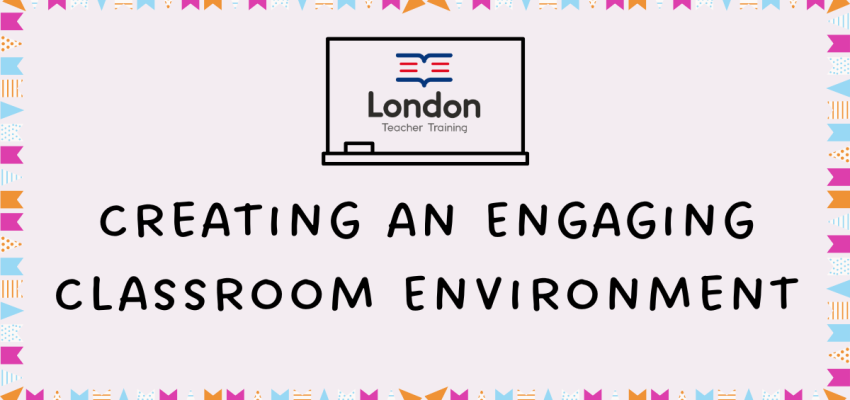Monday, September 30, 2024

Think back to when you were a child, and you’d walk into your classroom on a Monday morning. What caught your attention and what made you feel excited to be back at school after the weekend? I have so many fond memories of my primary school classrooms, in particular, and all the great displays that teachers would pour their hearts and souls into, so that we would be surrounded by engaging learning material.
As English teachers, we might not have the biggest classrooms or the most wall space to make such spectacular displays, but we can still strive to achieve a welcoming and engaging atmosphere in our classrooms. An atmosphere in which students will enter and immediately feel like they are in familiar territory and are happy to be there.
So, how can we achieve this feeling? How can we make walking into our classroom a joy for both us teachers and our students? Here are my top tips when it comes to creating an engaging classroom environment.
Your classroom is a reflection of you as a teacher, and if it’s messy, then the chances are that your students won’t respect it. Keep your books tidily on the shelf and keep everything in its place. Also, if you put anything up on the wall, display it in a tidy way, don’t just stick it up randomly with one sad piece of blu-tack. Take some pride in your classroom and let it reflect your professionalism as a teacher.
There’s nothing students love more than seeing their work on the walls of their classroom. If you need to make signs or want to put some artwork on the walls, let students make them and spend some time flexing their creative muscles. Students will feel a tremendous amount of satisfaction every time they walk into the room and see their masterpieces on display.
There are always interjections and questions that students ask exclusively in the L1- not necessarily because they don’t know how to say it in English, but because it just comes out more easily. A good way to get them out of this habit, is to have common chunks of language around the room that you can point to if you want to remind your students. If you place them at the front of the class, it’s more likely that the students will use them.
We’re all guilty of asking ‘What’s the date today?’ A good few times during the working week. It’s useful for everyone to have the date, month and other useful information on the wall so that they can be seen at a glance. It can also be useful for ss to have reminders of exam dates and even the different parts of the exams with their timings on display so they can refer to them throughout the year.
There is a whole host of extra material that comes with coursebooks, and posters are often left in the teachers’ room to gather dust instead of being used to help ss. Make sure you ask your DoS about these posters and use them in your classroom. Coursebooks for Young Learners often come with great ones that show the different characters that ss are going to come across.
In our quest to make our students better global citizens, we should be exposing them to the world outside their bubble as much as possible. After all, learning English is going to help them travel and live a more international life. Maps and images of different places around the world are a great way to spark ss’ interest and get them thinking about all the many possibilities they have in the future.
Personalisation is one of the most engaging techniques you can use as a teacher. Not only does this apply to your teaching, but also your teaching environment. You could put photos up of places you’ve visited or even where you come from so that students find out a little bit more about you. For the students, get them to create name posters or face registers that you can use throughout the year. You could even create a birthday calendar, so that you don’t forget to celebrate with your students on their special day!
If you have a big enough classroom, it can a good idea to display visual learning prompts in different areas of the classroom so you can refer to them easily. For example, you could have new vocabulary in one corner, grammar posters in another, and pronunciation resources in another. This organisation also helps ss when they recall language that has been seen in previous lessons and helps them become more independent learners.
We all have our own classroom management techniques for different ages and levels. The walls of your classroom are a great place to record how well students are doing and serve as a reminder for the next lesson. This could be star charts, homework lives, traffic lights or anything else you have in your teacher’s toolkit when it comes to classroom management.
If I had pound for every time I heard ‘Teacher, can I have a pen?’, I would be a very rich teacher indeed. It’s a well-known fact that student forget their stationery around 50% of the time. When this happens, rather than wasting class time having them ask you and you going around hunting for a pen, have some spare pens/pencils to hand that they can go and pick up themselves and then replace at the end of the class. I always take publishers’ pens and pencils from stands and bags at conferences and use them for this purpose!
So, there you have our ten top tips on how to make your classroom as engaging as possible this academic year. Which ideas are you going to put into practice?